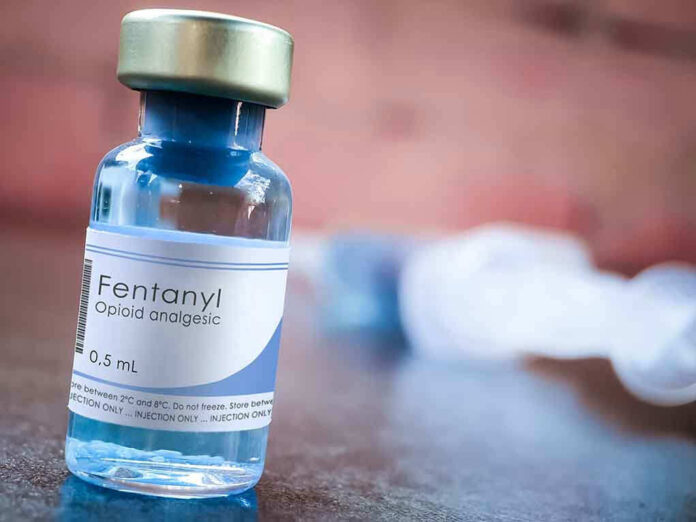
Federal agents just dismantled a Sinaloa Cartel-linked drug ring trafficking enough fentanyl to kill millions—exposing how open-border chaos and cartel power threaten American lives and security.
Story Highlights
- Authorities seized over 800 pounds of drugs, including 269 pounds of fentanyl, in a single operation targeting the Sinaloa Cartel.
- Cartel traffickers used semi-trucks to move deadly narcotics from Mexico through California into the Pacific Northwest.
- Fifteen suspects were indicted with direct ties to cartel leaders in Sinaloa, Mexico, as part of “Operation Take Back America.”
- Law enforcement emphasizes the unprecedented lethality of fentanyl and the urgent need to secure the border and combat transnational criminal organizations.
Record Fentanyl Seizure Tied to Cartel Networks
Over the past several weeks, federal, state, and local agencies joined forces to dismantle a major drug trafficking ring linked directly to the notorious Sinaloa Cartel. This coordinated operation led to the seizure of more than 800 pounds of narcotics in western Washington, with approximately 269 pounds of pure fentanyl—enough to deliver millions of lethal doses. The scale and lethality of this bust highlight the urgent threat posed by international drug cartels and the catastrophic consequences of border insecurity and lax enforcement in recent years.
Traffickers exploited America’s highways by transporting dangerous drugs from Mexico, through California, and into key distribution hubs in the Pacific Northwest using semi-trucks. These logistics underscore how organized criminal groups have taken advantage of weak border controls and loopholes left by the previous administration. Law enforcement officials say the operation, codenamed “Operation Take Back America,” directly targeted cartel leadership and their sophisticated distribution networks, making this one of the most significant interdictions on record.
Cartel Tactics and Law Enforcement Response
The Sinaloa Cartel, one of Mexico’s oldest and most powerful criminal organizations, has shifted its focus in recent years to synthetic opioids like fentanyl due to their potency and profitability. By collaborating with Chinese suppliers for chemical precursors, the cartel now fuels the U.S. overdose crisis on an unprecedented scale. Western Washington has emerged as a strategic hub for cartel-supplied narcotics, with repeated large-scale seizures confirming the region’s vulnerability. Authorities identified key leaders, including Rosario Abel “Joaquin” Camargo Banuelos and Francisco “Fernando” Camargo Banuelos, orchestrating operations from Sinaloa, Mexico, while trusted drivers like Isabel Villarreal Zapien managed logistics across state lines.
Law enforcement agencies—including the DEA, Seattle Police Department, Homeland Security Investigations, and the U.S. Attorney’s Office—executed a series of undercover operations, surveillance, and coordinated arrests that culminated in August 2025. Fifteen defendants faced a 37-count indictment, with 13 already in custody and six fugitives still at large. Assets totaling over $309,000 and 11 firearms were also seized, and ongoing investigations are targeting money laundering and chemical supply chains fueling the fentanyl pipeline.
Implications for Security, Policy, and Communities
This takedown delivers a crucial blow to cartel operations, immediately disrupting one of the largest fentanyl supply chains in the Pacific Northwest. Law enforcement leaders stress that the threat posed by transnational criminal organizations remains severe, and that continued vigilance, border security, and international cooperation are critical for protecting American lives. The operation’s success also exposes the risks and failures of policies that allowed drug traffickers to exploit gaps in the system—putting countless families, first responders, and communities at risk.
800+ Pounds of Fentanyl Seized in Operation Targeting Sinaloa Cartel
https://t.co/RKZiaHObzM— Townhall Updates (@TownhallUpdates) September 25, 2025
While experts acknowledge the significance of this victory, they warn that cartels are likely to adapt, shifting tactics and routes to evade detection. Financial crime analysts point to the growing sophistication of cartel money laundering, often involving Chinese networks and complex trade-based schemes. Public health officials argue that enforcement must be coupled with efforts to reduce demand for synthetic opioids, but conservative leaders maintain that the first line of defense is stopping illegal drugs at the border and dismantling the criminal organizations that profit from American suffering. As prosecutions continue and intelligence operations expand, the nation’s resolve to protect its citizens and uphold the rule of law faces a defining test.
Expert Analysis and the Road Ahead
Industry experts agree that the scale of this fentanyl seizure represents both a significant law enforcement achievement and a sobering reminder of the challenges posed by international drug cartels. The effectiveness of multi-agency collaboration is clear, but the evolving tactics of traffickers demand constant adaptation and robust policy. For conservative Americans, this story reaffirms the urgent need for strong borders, steadfast prosecution of criminal enterprises, and unwavering support for law enforcement. As the Trump administration focuses on restoring order and constitutional values, cases like this highlight what’s at stake—and why the fight against cartel-driven chaos cannot let up.
Sources:
2025 National Drug Threat Assessment
FinCEN Financial Trend Analysis: Fentanyl Trafficking












